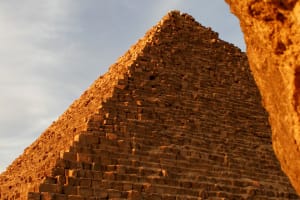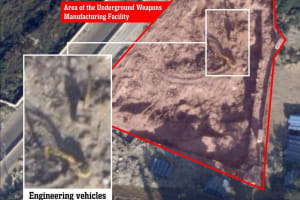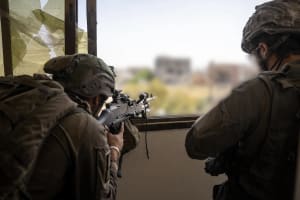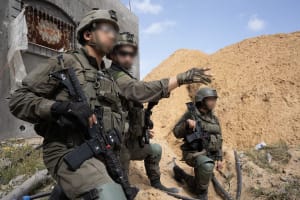Released Israeli hostage discloses she was raped by Hamas captors in Gaza
Israeli president: 'The whole world has the moral duty to stand with Amit – and all the victims – in condemning Hamas’s brutal terror'
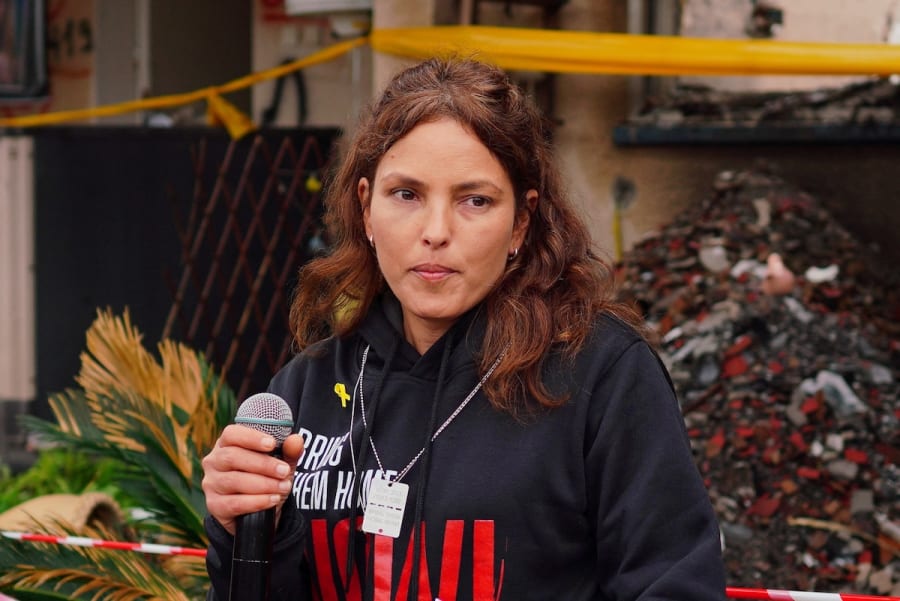
Forty-year-old Amit Soussana, an Israeli lawyer who lived alone on the kibbutz Kfar Aza spoke to The New York Times in her first public, in-depth interview about the sexual violence and horrific torture she endured after being abducted by Hamas terrorists into Gaza on Oct. 7.
The NYT report included interviews with Israeli doctors who treated former hostages as soon as they were released from captivity, as well as the medical records, videos, text messages and photographs.
During the interview, Soussana recalled how, after hearing rocket warning sirens and gunfire on the morning of Oct. 7, she hid inside the bedroom closet of her home, about 1.5 miles from the Gaza border.
Twenty minutes later, her phone battery depleted, moments before the terrorists entered and forcibly took her from her home.
“I heard an explosion, a huge explosion,” she said. “And the second after that, someone opened the closet door.”
The terrorists grabbed Soussana from the closet, she said. She witnessed around 10 men – armed with assault rifles, a grenade launcher and a machete – rifling through her belongings.
She was dragged from her burning home through a neighboring field toward Gaza, as revealed on security footage from a solar farm near the kibbutz that morning. The footage was widely circulated on social media after Oct. 7, providing evidence of the incident and showing the assailants repeatedly tackling her to the ground as they struggled to subdue her.
The video then shows a terrorist picking up Soussana, slinging her across his back with her legs thrashing in the air, causing the man to tumble to the ground.
“I didn’t want to let them take me to Gaza like an object, without a fight,” she said. “I still kept believing that someone will come and rescue me.”
The video shows the Israeli woman being beaten and wrapped in a white fabric. Unable to restrain her, the terrorists made a failed attempt to carry her by bicycle, Soussana said. Finally, they bound her hands and feet and dragged her across the farmland into Gaza.
She was badly wounded from the beating, bleeding heavily with a split lip, she explained. The hospital report released shortly after her release in November documented fractures in her right eye socket, cheek, knee and nose and severe bruising on her knee and back.
After reaching the border of Gaza, Soussana said she was shoved into a waiting vehicle and driven a few hundred yards into Gaza City. She was untied and dressed in a paramilitary uniform before being transferred to another vehicle filled with uniformed militants. A hood was then placed over her head.
Once in Gaza, she was held in a child’s bedroom, chained by her left ankle and guarded by a captor named Muhammad, Soussana said.
While she was held in the bedroom, the guard would sit beside her on the bed, lift her shirt and touch her and repeatedly ask about her menstrual period and when the cycle would end.
About a week after being abducted, the captor Muhammad unlocked the chain so Soussana could use the bathroom. Once she was undressed and washing herself off, he returned with a pistol and forced her to remove a towel she had wrapped herself in. He groped Soussana and then hit her.
The terrorists brought Soussana back to the bedroom where she said she was forced to commit a sexual act.
“He came towards me and shoved the gun at my forehead,” Soussana recalled. “Then he, with the gun pointed at me, forced me to commit a sexual act on him."
The NYT reported extensive details of Soussana’s abduction given in the interview, including sexual and other violent acts the terrorists committed. The report added that the personal account of Soussana was consistent with the information she provided to two doctors and a social worker less than 24 hours after she was freed on Nov. 30.
While the exact details of her account were documented both in the medical file and as part of the interview, The NYT agreed at the time not to disclose the specifics of their report.
In another act of torture, Soussana said a group of terrorists "suspended her across the gap between two couches and beat her."
The United Nations sent its own team to investigate the claims and in its 24-page report, affirmed there are "reasonable grounds to believe" Hamas terrorists committed sexual violence at multiple locations during the assault, as well as credible information indicating other forms of sexual violence, such as genital mutilation and sexualized torture.
In December, Israel’s Permanent Mission to the UN held a powerful session at the UN headquarters in New York, exposing the horrors of sexual violence committed by Hamas terrorists against Israeli women.
According to that report, the incident took place eight weeks into Israel's conflict with Hamas, during which Israeli Ambassador to the UN, Gilad Erdan, persistently called on UN bodies and the global community to denounce Hamas for the atrocities.
“Sadly, the very international bodies that are supposedly the defenders of all women showed that when it comes to Israelis, indifference is acceptable. To these organizations, Israeli women are not women, the rape of Israelis is not an act of rape. Their silence has been deafening!” Erdan stated.
It was only in the days leading up to the event that UN Women and the UN Sec.-Gen. António Guterres explicitly began to address the sexual violence reports, suggesting it should be investigated.
“There are numerous accounts of sexual violence during the abhorrent acts of terror by Hamas on 7 October that must be vigorously investigated and prosecuted. Gender-based violence must be condemned. Anytime. Anywhere,” wrote Guterres.
Erdan lambasted Guterres, saying: “Two months after the massacre and the rapes, the UN remembered to propose an investigation? And by an antisemitic body? The only investigation that should take place is into the shocking silence and indifference of UN Women in the face of the rape and crimes of sexual violence committed against Israeli women.”
In response to the NYT interview with former hostage Soussana, Israeli President Isaac Herzog wrote on 𝕏, “Amit Soussana speaks for all those who cannot speak. She speaks for all the victims of Hamas’ despicable sexual crimes and abuse. She speaks for all women everywhere. The whole world has the moral duty to stand with Amit – and all the victims – in condemning Hamas’s brutal terror, and in demanding the immediate return of all the hostages.”
Israeli Defense Force Spokesman Brig.-Gen. Daniel Hagari said Sousanna's testimony is a “wake up call to the world to act,” and emphasized the urgency of returning all Israeli hostages from Hamas captivity in Gaza
“Amit Soussana, from Kfar Aza, was kidnapped on the 7th of October by Hamas and was held captive for 55 days. Amit Soussana suffered sexual violence in her captivity by her captor. This is a wake up call to the world to act. To do everything and pressure Hamas. To free our hostages. To bring our hostages home. 134 hostages in horrific conditions under the captivity of Hamas. This is why we are in Gaza. This is why we fight.”
Soussana’s interview with the NYT is the only time that a freed hostage has publicly spoken about their experience of sexual assault by Hamas terrorists during captivity.
In early March, the United published a report indicating that rape and gang rape likely occurred during the Oct. 7 Hamas terror onslaught and said that there is “clear and convincing” evidence to show that hostages were raped while being held in Gaza, and that those currently held captive are still facing such abuse.
Despite the evidence, two days later, UN Special Rapporteur on Violence against Women and Girls Reem Alsalem continued to deny that Israeli women were mass raped by Palestinian men on Oct. 7.

The All Israel News Staff is a team of journalists in Israel.



